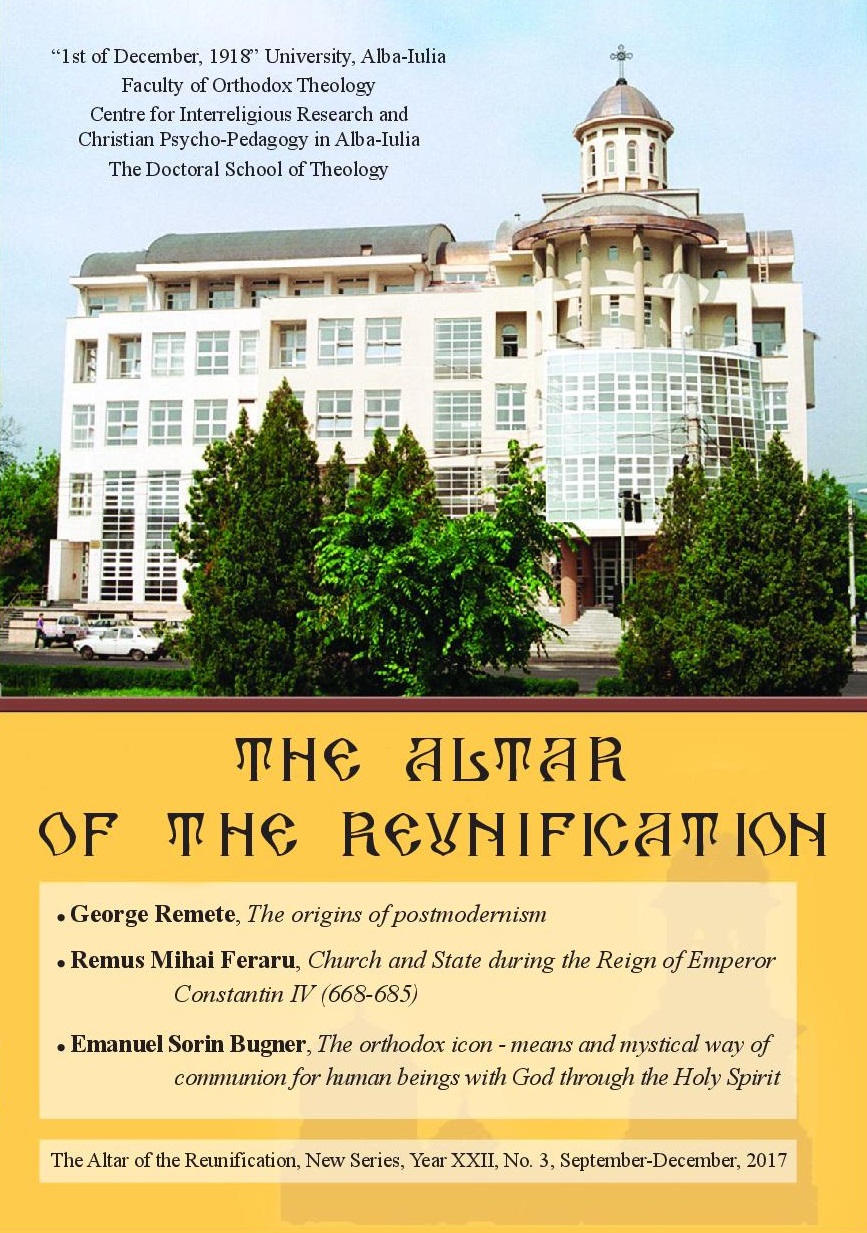The analysis of chants from church psaltickhia of the metropolitan of Bucovina. Dr. Silvestru Morariu-Andrievici, first transcription of the traditional church music, psaltic, romanian, on linear notation in comparison with other similar chants from
The analysis of chants from church psaltickhia of the metropolitan of Bucovina. Dr. Silvestru Morariu-Andrievici, first transcription of the traditional church music, psaltic, romanian, on linear notation in comparison with other similar chants from
Author(s): Costel-Mirel NechitaSubject(s): Music, Theology and Religion
Published by: Facultatea de Teologie Ortodoxă Alba Iulia
Keywords: Bucovina;transcription;church music;Byzantine; Vespers;Anastasimatar;voices;candence;tierce;
Summary/Abstract: Romania is a country which includes several provinces. Some of these, Bucovina, Transylvania, Banat and Oltenia, were occupied, in the XIIth-XIIIth centuries, by the Austro-Hungarian Empire. Although the occupation was long lasting, however, the Romanians did not lose their identity, culture, language and faith. In order to cope with all kinds of attempts in Bucovina, cultural societies were set up by the personalities of the time, among which we mention Metropolitan of Bucovina Dr. Silvestru-Morariu Andrievici (1818-1895), whose name, besides many others, is linked the school history and culture in Bucovina. Also, related his name is linked the Church's Psaltickhia, the first transcription of a part of the traditional church music, psaltic, Romanian, on the linear notation, a national and universal value document. In this study we will analyze this document in comparison with the Church Chants according to melodies of the eight voices collected in Transylvania and published by Father Dimitrie Cuntanu in 1890, and with the chants from the Romanian Anastasimatarele chosen and edited in the Uniformed Anastasimatar -Vecernier orthe evening Saturdays Vespers Chants after the eight church voices of Nicolae Lungu, Grigore Costea and Ion Croitoru. The purpose of the analysis is to see whether, under the occupation, the Romanian lands have kept and cultivated their church musical values, as happened at the level of the whole country, and if these values are linked with the unity of other Romanian Principalities and if there is unity in the church chants between the church composers from our country.
Journal: Altarul Reîntregirii
- Issue Year: XXII/2017
- Issue No: 3
- Page Range: 77-130
- Page Count: 54
- Language: English

